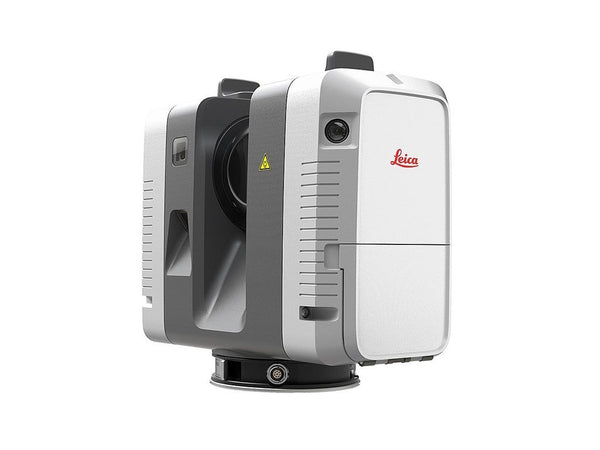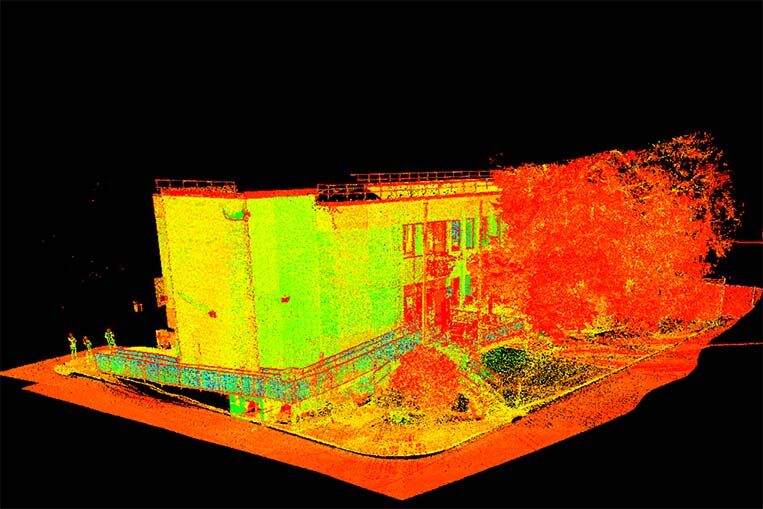Expert Strategies for Getting the Most Out of 3D Scanning in Architecture
Wiki Article
Exactly How 3D Laser Scanning Changes Architectural Design and Building And Construction Projects
3D laser scanning is transforming the landscape of architectural design and building. This innovation uses unequaled accuracy in capturing existing atmospheres, which assists in much better task planning and implementation. It minimizes errors while improving efficiency in various phases of development. The ramifications for partnership amongst designers, designers, and various other stakeholders are considerable. These developments open up the door to new layout opportunities and innovative options. What exists in advance for this developing innovation?The Principles of 3D Laser Scanning Technology
Although 3D laser scanning technology might seem facility, its core concepts are uncomplicated and transformative for building design. This innovation employs laser beam of lights to capture specific measurements of physical frameworks, creating a comprehensive factor cloud that represents the scanned setting. A laser scanner releases fast pulses of light, measuring the time it takes for the light to return, which permits the calculation of distances with remarkable accuracy.The resulting point cloud can be transformed right into a 3D model, providing engineers with very useful aesthetic information. This model enables professionals to evaluate and adjust design elements within their jobs, enabling innovative solutions and improved visualization. By using 3D laser scanning, designers can better understand the status quo of a site, making sure that brand-new designs harmonize with their environments. This assimilation of technology right into building style notes a significant development, fostering creativity and precision in the area.

Enhancing Accuracy and Effectiveness in Architectural Projects
As building projects progressively demand precision and speed, 3D laser scanning emerges as a critical device in boosting both accuracy and efficiency. This technology captures millions of data factors in a quick duration, developing thorough and accurate 3D designs of existing frameworks. The capacity to acquire exact dimensions minimizes the risk of mistakes during the layout phase, enabling designers to imagine their tasks with unequaled quality.In addition, the quick information collection procedure decreases the moment spent on-site, making it possible for teams to concentrate on analysis and layout improvements. With real-time information availability, adjustments can be made promptly, promoting a much more structured workflow. The combination of 3D laser scanning into building techniques not only boosts measurement accuracy yet likewise boosts the total task timeline, facilitating quicker decision-making. In a sector where precision is essential, this technology stands as a transformative force, boosting the standards of building design and building and construction projects.
Simplifying Collaboration Among Stakeholders
While traditional architectural processes often include fragmented communication among stakeholders, 3D laser scanning cultivates a more cohesive collective setting. By offering exact, high-resolution information, this innovation permits architects, service providers, customers, and engineers to run from a unified factor of recommendation. The detailed visualizations generated through laser scanning get rid of misinterpretations and uncertainties, making sure that all celebrations have accessibility to the same info.This transparency improves decision-making and encourages timely responses, as stakeholders can easily visualize design aspects and spatial partnerships. On top of that, the assimilation of 3D scanning data into Structure Information Modeling (BIM) platforms additionally simplifies collaboration, enabling real-time updates and adjustments. Such seamless interaction not just lessens conflicts but additionally accelerates job timelines, as all stakeholders stay straightened throughout the style and building stages. Inevitably, 3D laser scanning changes conventional process right into a much more efficient and joint procedure, benefiting all parties involved.
Unlocking Innovative Possibilities in Design
By making it possible for engineers look at these guys to imagine complicated spatial connections and intricate details, 3D laser scanning discloses creative opportunities in design. This modern technology permits for exact mapping of existing environments, allowing designers to discover ingenious concepts that could have formerly seemed not practical. With look these up highly exact information, designers can trying out non-traditional kinds and products, pressing the borders of standard architecture.The combination of 3D laser scanning into the design process cultivates partnership amongst multidisciplinary groups, encouraging the exchange of ideas and boosting creativity. The comprehensive visualizations created by this modern technology not only aid in determining possible layout difficulties however also inspire services that may not have been taken into consideration. Consequently, engineers can develop more dynamic and appealing areas that resonate with users while fulfilling practical requirements. Eventually, 3D laser scanning changes the building landscape, equipping developers to understand their visions with extraordinary precision and creativity.
The Future of 3D Laser Scanning in Architecture and Construction
The combination of 3D laser scanning right into architectural design not only enhances creativity but additionally establishes the phase for its evolving duty in the future of style and construction. As technology advances, the precision and effectiveness of laser scanning will remain to enhance, allowing building contractors and designers to create more complex layouts with precision - 3D Scanning. Using this technology in real-time data collection will certainly help with far better decision-making, reducing errors and improving processFuture applications might consist of increased and virtual reality assimilations, enabling stakeholders to visualize projects in immersive environments. Furthermore, as sustainability comes to be a concern, 3D laser scanning will sustain the development of energy-efficient styles by providing in-depth understandings into existing frameworks. As collaboration amongst various self-controls comes to be more necessary, the ability to share accurate 3D versions will promote advancement and enhance job outcomes. Inevitably, 3D laser scanning will redefine criteria in architectural layout and building methods.
Often Asked Inquiries
What Is the Price of Executing 3D Laser Scanning Innovation?

The length of time Does a Regular 3D Laser Scanning Project Take?
A regular 3D laser scanning project can take anywhere from a few hours to several days, depending upon aspects such as the project's size, complexity, and the degree of detail needed for accurate information capture.What Types of Projects Advantage Most From 3D Laser Scanning?
3D laser scanning benefits different tasks, particularly large constructions, historical repairs, and complex remodellings. It improves accuracy in dimensions, reduces errors, and offers detailed information essential for effective planning and execution in architectural design and building and construction.
Exist Particular Software Program Programs Required for 3D Laser Scans?
Yes, specific software application are essential for refining 3D laser scans. 3D Scanning. wikipedia reference Popular alternatives include Autodesk ReCap, Faro Scene, and Leica Cyclone, each offering distinct features tailored for visualizing and examining checked data efficiently in different projectsExactly How Does 3D Laser Scanning Effect Environmental Sustainability in Building And Construction?
3D laser scanning boosts ecological sustainability in building by decreasing product waste, making it possible for precise dimensions, and advertising reliable resource use. This innovation enables for much better planning, decreasing the ecological footprint of construction tasks with boosted accuracy and efficiency.3D laser scanning is changing the landscape of building style and building. 3D laser scanning innovation may seem complicated, its core principles are straightforward and transformative for building layout. By making it possible for designers to imagine intricate complex details and spatial connections, 3D laser scanning exposes creative opportunities in design. The integration of 3D laser scanning right into the style process cultivates partnership among multidisciplinary groups, motivating the exchange of ideas and improving imagination. The integration of 3D laser scanning right into architectural layout not only enhances creative thinking yet likewise sets the phase for its progressing role in the future of design and construction.
Report this wiki page